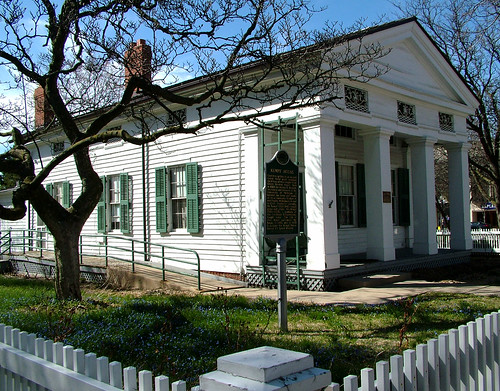The Greek Revival style was also used for private residences. Many of these houses, built by the rich and elite of America, were mansions of grand proportions. Others were more humble and less ornate. The Kempf House, built in 1853, is one of Ann Arbor's most celebrated structures. This small Greek Revival residence on South Division Street is listed on the National Register of Historic Places. The plaque outside the Kempf House reads:
Cast iron grills in an ancient Greek floral motif highlight the frieze of this temple-front Greek Revival house. Built in 1853 for Henry D. Bennett, Secretary and Steward of the University of Michigan, it became the home and studio of local musicians Reuben H. and Pauline Widenmann Kempf in 1890. [. . . ] The city of Ann Arbor purchased the house in 1969, and in 1983 it became the Kempf House Center for Local History.


1 comment:
nice post... I will have to go inside for the tour sometime.
Post a Comment